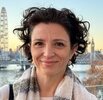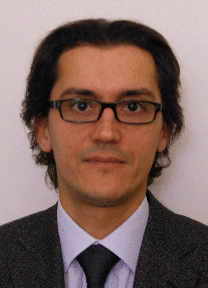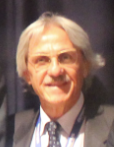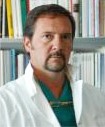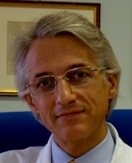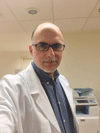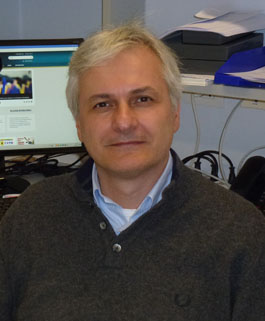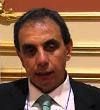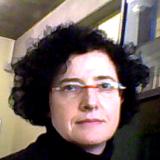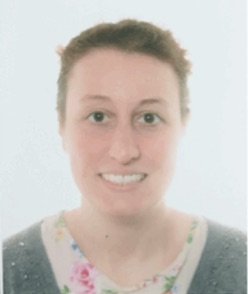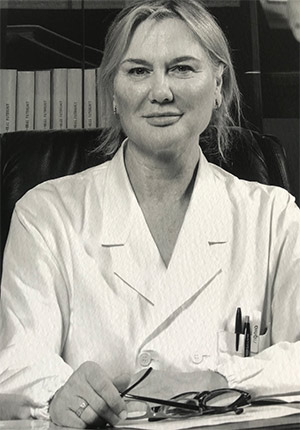Studying at the University of Verona
Academic calendar
The academic calendar shows the deadlines and scheduled events that are relevant to students, teaching and technical-administrative staff of the University. Public holidays and University closures are also indicated. The academic year normally begins on 1 October each year and ends on 30 September of the following year.
Course calendar
The Academic Calendar sets out the degree programme lecture and exam timetables, as well as the relevant university closure dates..
| Period | From | To |
|---|---|---|
| LEZIONI 1° E 2° SEMESTRE | Oct 1, 2018 | May 31, 2019 |
| LEZIONI 1° SEMESTRE 2°-3°-4°-5°-6° ANNO | Oct 1, 2018 | Dec 21, 2018 |
| LEZIONI I° SEMESTRE 1°ANNO | Oct 15, 2018 | Dec 21, 2018 |
| LEZIONI 2° SEMESTRE | Feb 18, 2019 | May 31, 2019 |
| Session | From | To |
|---|---|---|
| SESSIONE INVERNALE A.A. 2017/2018 E 1°SEMESTRE A.A. 2018/2019 | Jan 7, 2019 | Feb 15, 2019 |
| SESSIONE ESTIVA A.A. 2018/2019 | Jun 3, 2019 | Jul 26, 2019 |
| SESSIONE ESTIVA LAUREANDI | Jun 3, 2019 | Jul 5, 2019 |
| SESSIONE AUTUNNALE A.A. 2018/2019 | Sep 2, 2019 | Sep 27, 2019 |
| Session | From | To |
|---|---|---|
| SESSIONE INVERNALE | Mar 4, 2019 | Mar 15, 2019 |
| SESSIONE ESTIVA | Jul 15, 2019 | Jul 31, 2019 |
| SESSIONE AUTUNNALE | Oct 14, 2019 | Oct 25, 2019 |
| Period | From | To |
|---|---|---|
| FESTIVITA' OGNISSANTI | Nov 1, 2018 | Nov 1, 2018 |
| FESTIVITA' IMMACOLATA CONCEZIONE | Dec 8, 2018 | Dec 8, 2018 |
| VACANZE DI NATALE | Dec 24, 2018 | Jan 6, 2019 |
| VACANZE DI PASQUA | Apr 19, 2019 | Apr 28, 2019 |
| FESTA DELLA LIBERAZIONE | Apr 25, 2019 | Apr 25, 2019 |
| FESTIVITA' DEL LAVORO | May 1, 2019 | May 1, 2019 |
| FESTIVITA' DEL SANTO PATRONO SAN ZENO | May 21, 2019 | May 21, 2019 |
| FESTA DELLA REPUBBLICA | Jun 2, 2019 | Jun 2, 2019 |
| Description | Period | From | To |
|---|---|---|---|
| TIROCINIO 1°SEMESTRE ESCLUSI I PERIODI DI VACANZA | TIROCINIO 1°SEMESTRE ESCLUSI I PERIODI DI VACANZA | Oct 1, 2018 | Feb 17, 2019 |
| ATTIVITA' FACOLTATIVA O DI RECUPERO TIROCINIO | ATTIVITA' FACOLTATIVA O DI RECUPERO TIROCINIO | Oct 1, 2018 | Sep 30, 2019 |
| TIROCINIO 2°SEMESTRE ESCLUSI I PERIODI DI VACANZA | TIROCINIO 2°SEMESTRE ESCLUSI I PERIODI DI VACANZA | Feb 18, 2019 | Jul 26, 2019 |
Exam calendar
Exam dates and rounds are managed by the relevant Medicine Teaching and Student Services Unit.
To view all the exam sessions available, please use the Exam dashboard on ESSE3.
If you forgot your login details or have problems logging in, please contact the relevant IT HelpDesk, or check the login details recovery web page.
Should you have any doubts or questions, please check the Enrollment FAQs
Academic staff
 mila.dallapreda@univr.it
mila.dallapreda@univr.it
 045 8122470
045 8122470
 mattia.marchiori@univr.it
mattia.marchiori@univr.it
 guido.martignoni@univr.it
guido.martignoni@univr.it
 alessia.pardo@univr.it
alessia.pardo@univr.it
 dora.renna@univr.it
dora.renna@univr.it
 annarita.signoriello@univr.it
annarita.signoriello@univr.it
Study Plan
The Study Plan includes all modules, teaching and learning activities that each student will need to undertake during their time at the University.
Please select your Study Plan based on your enrollment year.
1° Year
| Modules | Credits | TAF | SSD |
|---|
2° Year activated in the A.Y. 2019/2020
| Modules | Credits | TAF | SSD |
|---|
3° Year activated in the A.Y. 2020/2021
| Modules | Credits | TAF | SSD |
|---|
4° Year activated in the A.Y. 2021/2022
| Modules | Credits | TAF | SSD |
|---|
5° Year activated in the A.Y. 2022/2023
| Modules | Credits | TAF | SSD |
|---|
6° Year activated in the A.Y. 2023/2024
| Modules | Credits | TAF | SSD |
|---|
| Modules | Credits | TAF | SSD |
|---|
| Modules | Credits | TAF | SSD |
|---|
| Modules | Credits | TAF | SSD |
|---|
| Modules | Credits | TAF | SSD |
|---|
| Modules | Credits | TAF | SSD |
|---|
| Modules | Credits | TAF | SSD |
|---|
Legend | Type of training activity (TTA)
TAF (Type of Educational Activity) All courses and activities are classified into different types of educational activities, indicated by a letter.
Physiology (2019/2020)
Teaching code
4S00120
Teacher
Coordinator
Credits
9
Language
Italian
Scientific Disciplinary Sector (SSD)
BIO/09 - PHYSIOLOGY
Period
LEZIONI 1° SEMESTRE 2°-3°-4°-5°6° ANNO dal Oct 1, 2019 al Dec 20, 2019.
Learning outcomes
1) Knowledge of cellular biophysics and physiology. 2) Mechanisms of function of the organs. 3) Integration of organs function into apparatuses. 4) Local and systemic mechanisms of regulation of organs function. 5) Most important human physiological parameters.
Program
1 Biophysics and cellular physiology
Homeostasis and the constancy of the internal environment. Structure of the membrane. Movement of molecules across the membrane. Resting membrane potential, graded potentials, action potential.
2 Muscle
Skeletal muscle: Molecular bases of contraction; neuromuscular junction, excitation-contraction coupling; types of synaptic transmission block; mechanics and energy expenditure of contraction; types of muscle fibres; motor unit; modulation of strength of contraction; muscle fatigue; effects of exercise. Smooth muscle: classification; molecular bases of contraction; excitation-contraction coupling.
3 Nervous System
Functional anatomy of the neuron. Structure of the synapse. Function of excitatory and inhibitory synapses. Temporal and spatial summation. Modulation of synaptic function: short-term and long-term synaptic plasticity. Principles of functional organization of the nervous tissue. Sensory systems: sensory receptors and transduction of sensory stimulus into nerve impulses; classification of sensory modalities; somatic sensation; pain sensation; chemical senses: smell and taste. Motor systems: spinal control of movement; spinal reflexes; alpha-gamma activation; different levels of control of posture and locomotion; functional organization of motor pathways.
4 Cardio-vascular system
Blood tissue: components and regulation of red cells production. The heart: functional structure; rhythmical excitation; excitation-contraction coupling; electrocardiogram in physiology and pathology; the cardiac cycle; regulation of cardiac output and venous return; Starling’s law . Circulation: overview; hemodynamic, pressure, flow, resistance, velocity; arterial pressure, definition, measurement, control; arterioles; local (organ) control of blood flow; capillary flow, diffusion of molecules, filtration and reabsorption of fluids; veins.
5 Respiratory system
Functional anatomy. Ventilation mechanics; Volumes and capacitances of the lungs; partial pressures of the gases; alveolar gas exchanges; respiratory exchange ratio; alveolar ventilation/perfusion ratio; transport of gases in the blood; respiratory center; chemical control of respiration; respiratory alkalosis/acidosis; hypoxia.
6 Kidney
Functional structure. Glomerular filtration, renal blood flow ant their control. Clearance. Renal tubular reabsorption and secretion. Henle’s loop. Control of water and sodium secretion. Control of potassium and calcium secretion. Control of pH.
7 Gastrointestinal system
Functional organization of the gastrointestinal tract. Neuronal and hormonal control GI function. Types of movements. Secretion of fluids and enzymes. Digestion and absorption of carbohydrates, proteins, lipids. Salivation and ingestion. The stomach. Small intestine. Colon.
8 Endocrinology
Principles of function. Pituitary hormones and their hypothalamic control. Thyroid and parathyroid hormones. Adrenocortical hormones. Pancreatic hormones. Gonadic hormones.
9 Physiology of the stomatognathic apparatus
Tooth pain sensation. Mechanism and reflexes of chewing. Central control of chewing.
| Author | Title | Publishing house | Year | ISBN | Notes |
|---|---|---|---|---|---|
| Koeppen B.M., Stanton B.A. | Berne Levy Fisiologia (Edizione 6) | Ambrosiana | 2010 | ||
| Barrett K.E., Barman S.M., Boitano S., Brooks L.H. | Fisiologia Medica di Ganong (Edizione 13) | Piccin | 2017 | ||
| Hall | Fisiologia medica Test di autovalutazione (Edizione 1) | Edra | 2017 | 9788821442254 | |
| Manzoni Diego - Scarnati Eugenio | Fisiologia orale e dell'apparato stomatognatico | edi-ermes | 2011 | 978-88-7051-259-5 | |
| Hall J.E. | Guyton e Hall Fisiologia Medica (Edizione 13) | edra | 2017 | ||
| Widmaier E.P., Raff H., Strang K.T. | Vander Fisiologia (Edizione 2) | Ambrosiana | 2018 | 9788808280022 |
Examination Methods
Oral test
Free choice courses
Modules not yet included
Career prospects
Module/Programme news
News for students
There you will find information, resources and services useful during your time at the University (Student’s exam record, your study plan on ESSE3, Distance Learning courses, university email account, office forms, administrative procedures, etc.). You can log into MyUnivr with your GIA login details: only in this way will you be able to receive notification of all the notices from your teachers and your secretariat via email and soon also via the Univr app.
Gestione carriere
Graduation
Documents
| Title | Info File |
|---|---|
|
|
pdf, it, 288 KB, 11/08/22 |
|
|
pdf, it, 305 KB, 24/03/22 |
|
|
pdf, it, 138 KB, 21/06/23 |
|
|
pdf, it, 379 KB, 24/03/22 |
Student login and resources
Sbarramenti
Documents
| Title | Info File |
|---|---|
|
|
pdf, it, 431 KB, 21/06/23 |
|
|
pdf, it, 292 KB, 21/06/23 |
Riconoscimento carriera pregressa
Documents
| Title | Info File |
|---|---|
|
|
pdf, it, 1215 KB, 21/06/23 |
Obblighi formativi aggiuntivi
Documents
| Title | Info File |
|---|---|
|
|
pdf, it, 275 KB, 21/06/23 |











